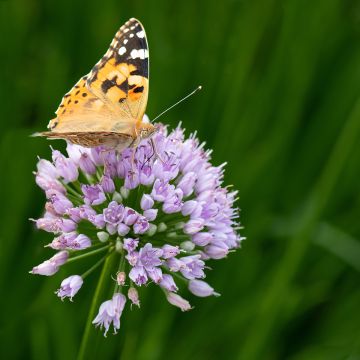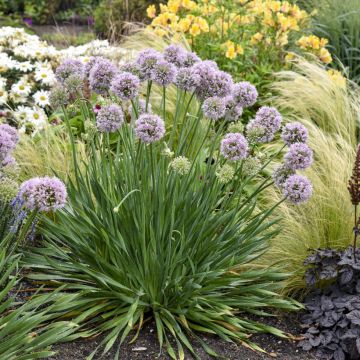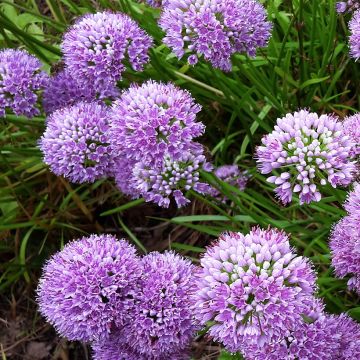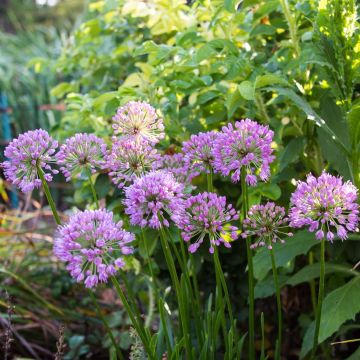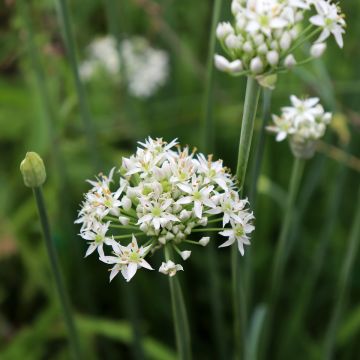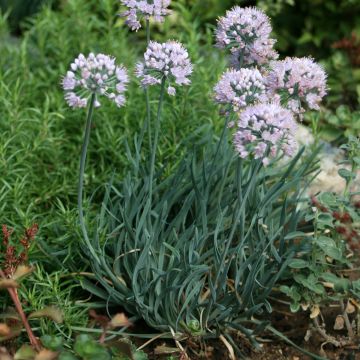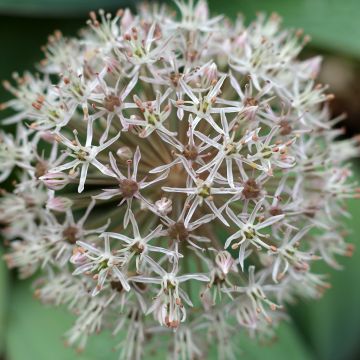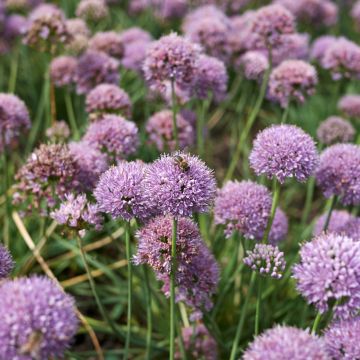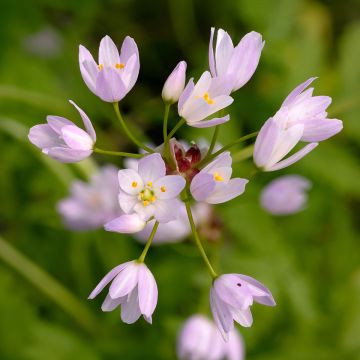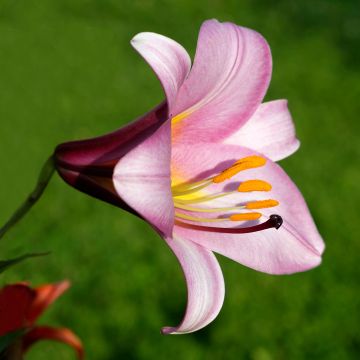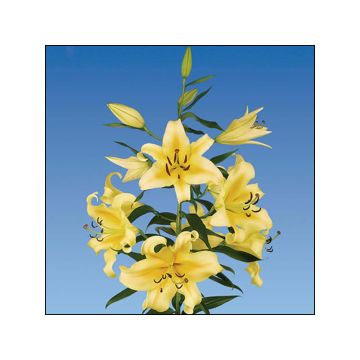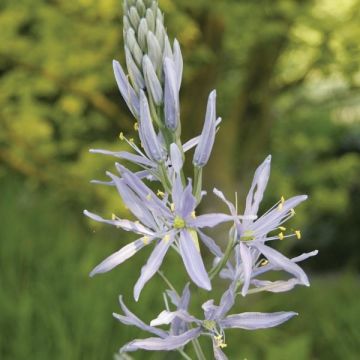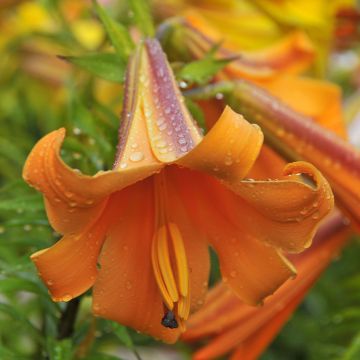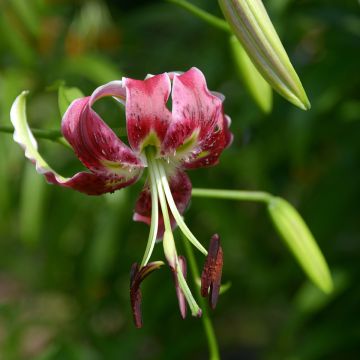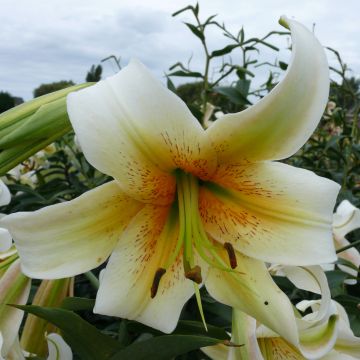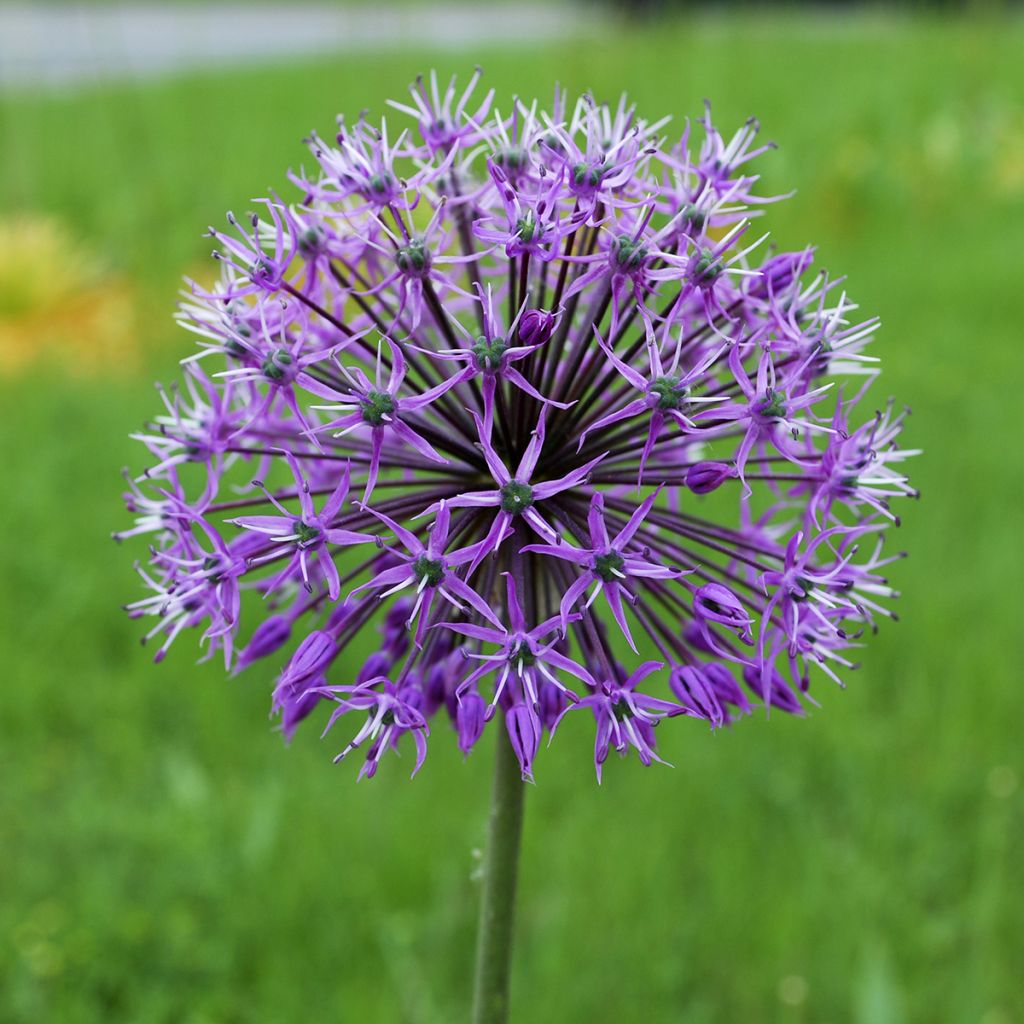

Allium stipitatum Violet Beauty
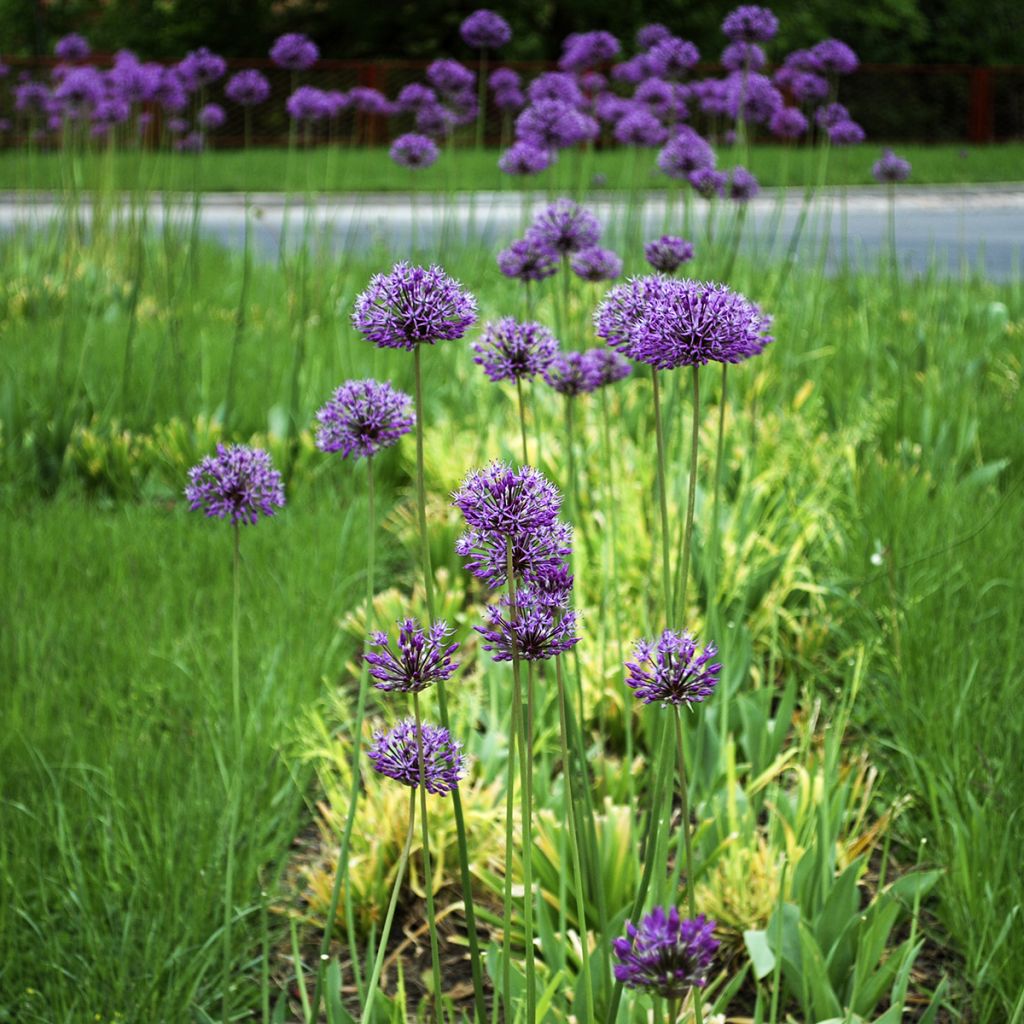

Allium stipitatum Violet Beauty
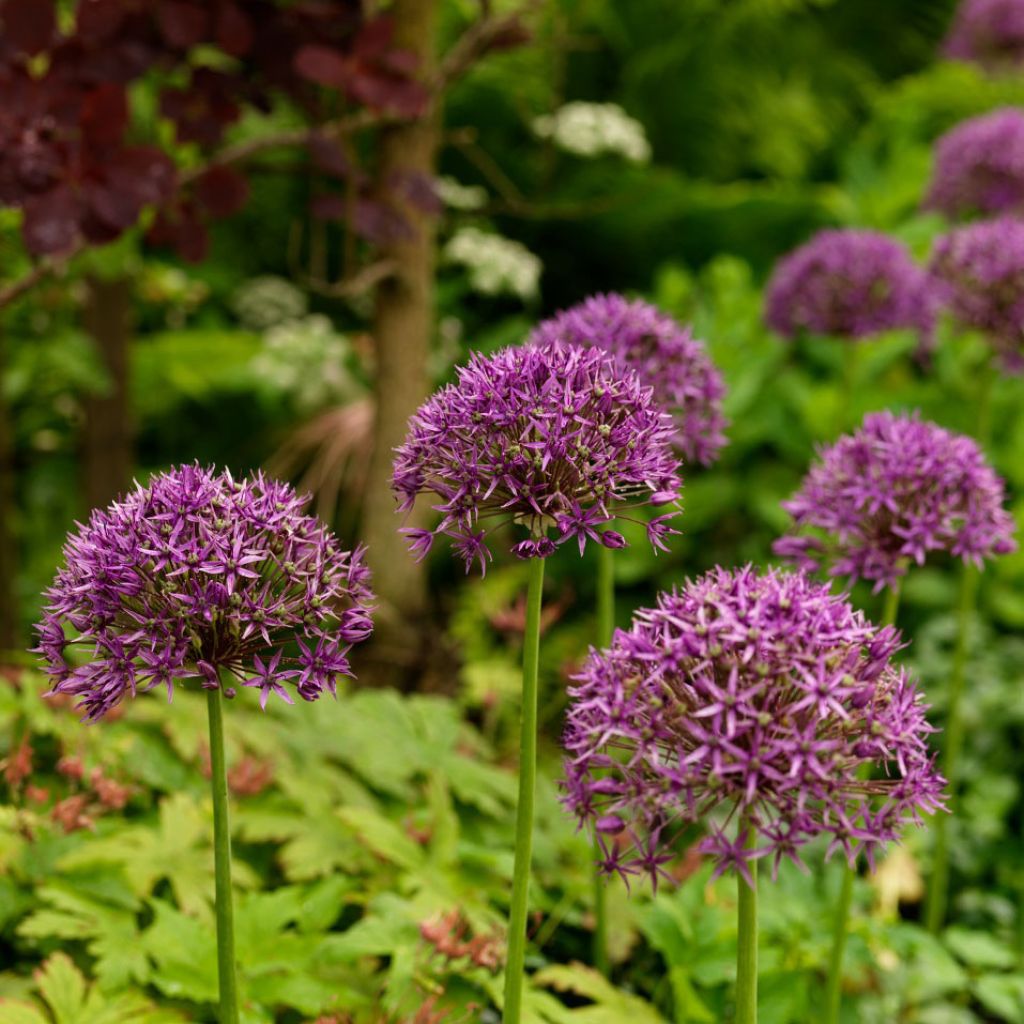

Allium stipitatum Violet Beauty
Allium stipitatum Violet Beauty
Allium stipitatum Violet Beauty
Ornamental Onion, Flowering Garlic
The bulbs I received seem healthy, planted near the "Papi Delbard" rose bush, now waiting for them to sprout... or not?
Thierry, 19/09/2024
Why not try an alternative variety in stock?
View all →This plant carries a 6 months recovery warranty
More information
We guarantee the quality of our plants for a full growing cycle, and will replace at our expense any plant that fails to recover under normal climatic and planting conditions.
From €5.90 for pickup delivery and €6.90 for home delivery
Express home delivery from €8.90.

Does this plant fit my garden?
Set up your Plantfit profile →
Description
Allium stipitatum 'Violet Beauty' is a lovely variety of ornamental garlic with delicately scented mauve-violet flowers. With its dense and almost round umbels, adorned with numerous small star-shaped flowers, this allium is perfect in blue and purple flower beds. This variety has a slim but sturdy stem, resistant to wind, like tall grasses. This wildly charming plant is vigorous and long-lasting in well-drained soil and sunny locations. It also tolerates drought very well.
Allium stipitatum 'Violet Beauty' is a horticultural variety derived from A. stipitatum, native to central Asia. This herbaceous bulbous plant belongs to the Amaryllidaceae family, like cultivated garlic, onion, and leek. It has a fleshy storage organ that multiplies by forming bulblets and shares with other members of its family a noticeable onion or garlic smell when its foliage is crushed. The inflorescences, perched at 1m (3ft) in height, correspond to large round umbels that can measure up to 13cm (6in) in diameter, and are made up of numerous mauve star-shaped flowers highlighted with violet. This flowering period is from May to June. The slightly hairy foliage consists of 4 to 6 wide basal leaves with a greyish-green color. It yellows and disappears at the same time as the flowering appears, which is a good adaptation to hot and dry summer conditions.
Easy to grow and majestic, Allium stipitatum and its varieties appreciate any type of moist but well-drained soil during the growing season. It likes dry soil in summer. It prefers a sunny location. Perfect in flower beds and borders, it can also be grown on a balcony or patio. Its foliage and flowers will add a unique touch to fresh or dried bouquets. Plant it in groups of 5 among ornamental grasses and perennials, or near roses or yellow brooms. For a spectacular sculptural effect, plant them with topiary boxwood balls. You can plant it alone or with A. macleanii, which has the same height and blooms at the same time.
Small vegetable garden tip: plant some ornamental garlic in the middle of strawberries to protect them from fungal diseases. They will add a few pleasant blooms that are sometimes lacking among vegetables.
Report an error about the product description
Allium stipitatum Violet Beauty in pictures
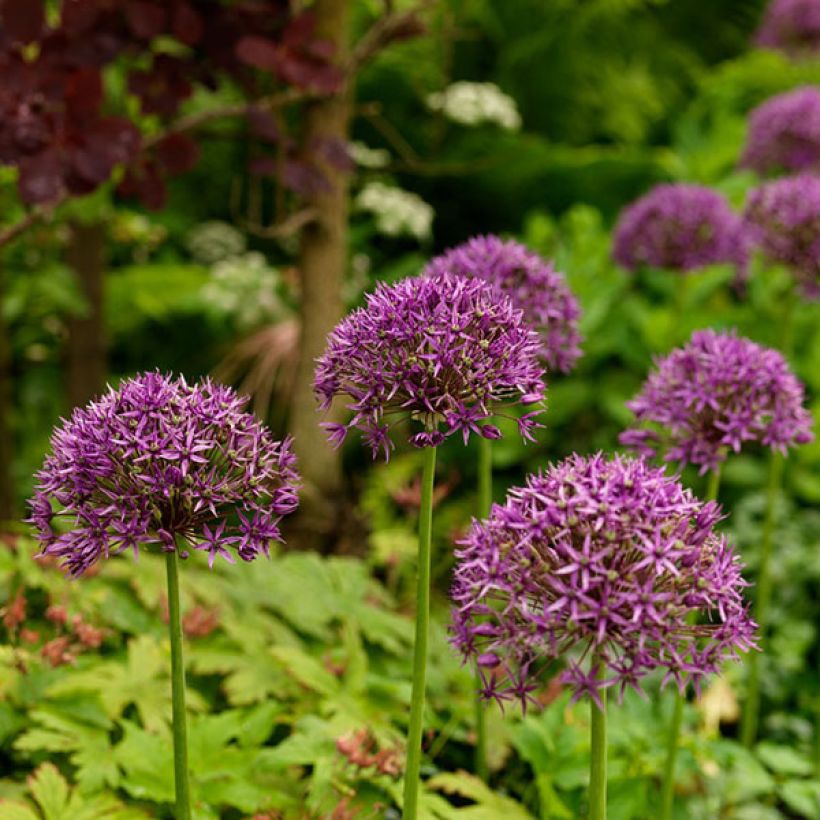



Plant habit
Flowering
Foliage
Botanical data
Allium
stipitatum
Violet Beauty
Alliaceae - Liliaceae
Ornamental Onion, Flowering Garlic
Cultivar or hybrid
Other Allium
Planting and care
Alliums are easy to grow. Plant 'Violet Beauty' preferably before the end of October so that it has enough time to establish. It dreads moisture. Give it a sunny spot in well-drained soil, even if it's rocky. Plant the bulbs at a depth of 10 or 15cm (4 or 6in), spaced 15 cm (6in) apart. They are not demanding, but do prefer poor soil.
Planting period
Intended location
Care
-
, onOrder confirmed
Reply from on Promesse de fleurs
Spectacular bulbs
Haven't found what you were looking for?
Hardiness is the lowest winter temperature a plant can endure without suffering serious damage or even dying. However, hardiness is affected by location (a sheltered area, such as a patio), protection (winter cover) and soil type (hardiness is improved by well-drained soil).

Photo Sharing Terms & Conditions
In order to encourage gardeners to interact and share their experiences, Promesse de fleurs offers various media enabling content to be uploaded onto its Site - in particular via the ‘Photo sharing’ module.
The User agrees to refrain from:
- Posting any content that is illegal, prejudicial, insulting, racist, inciteful to hatred, revisionist, contrary to public decency, that infringes on privacy or on the privacy rights of third parties, in particular the publicity rights of persons and goods, intellectual property rights, or the right to privacy.
- Submitting content on behalf of a third party;
- Impersonate the identity of a third party and/or publish any personal information about a third party;
In general, the User undertakes to refrain from any unethical behaviour.
All Content (in particular text, comments, files, images, photos, videos, creative works, etc.), which may be subject to property or intellectual property rights, image or other private rights, shall remain the property of the User, subject to the limited rights granted by the terms of the licence granted by Promesse de fleurs as stated below. Users are at liberty to publish or not to publish such Content on the Site, notably via the ‘Photo Sharing’ facility, and accept that this Content shall be made public and freely accessible, notably on the Internet.
Users further acknowledge, undertake to have ,and guarantee that they hold all necessary rights and permissions to publish such material on the Site, in particular with regard to the legislation in force pertaining to any privacy, property, intellectual property, image, or contractual rights, or rights of any other nature. By publishing such Content on the Site, Users acknowledge accepting full liability as publishers of the Content within the meaning of the law, and grant Promesse de fleurs, free of charge, an inclusive, worldwide licence for the said Content for the entire duration of its publication, including all reproduction, representation, up/downloading, displaying, performing, transmission, and storage rights.
Users also grant permission for their name to be linked to the Content and accept that this link may not always be made available.
By engaging in posting material, Users consent to their Content becoming automatically accessible on the Internet, in particular on other sites and/or blogs and/or web pages of the Promesse de fleurs site, including in particular social pages and the Promesse de fleurs catalogue.
Users may secure the removal of entrusted content free of charge by issuing a simple request via our contact form.
The flowering period indicated on our website applies to countries and regions located in USDA zone 8 (France, the United Kingdom, Ireland, the Netherlands, etc.)
It will vary according to where you live:
- In zones 9 to 10 (Italy, Spain, Greece, etc.), flowering will occur about 2 to 4 weeks earlier.
- In zones 6 to 7 (Germany, Poland, Slovenia, and lower mountainous regions), flowering will be delayed by 2 to 3 weeks.
- In zone 5 (Central Europe, Scandinavia), blooming will be delayed by 3 to 5 weeks.
In temperate climates, pruning of spring-flowering shrubs (forsythia, spireas, etc.) should be done just after flowering.
Pruning of summer-flowering shrubs (Indian Lilac, Perovskia, etc.) can be done in winter or spring.
In cold regions as well as with frost-sensitive plants, avoid pruning too early when severe frosts may still occur.
The planting period indicated on our website applies to countries and regions located in USDA zone 8 (France, United Kingdom, Ireland, Netherlands).
It will vary according to where you live:
- In Mediterranean zones (Marseille, Madrid, Milan, etc.), autumn and winter are the best planting periods.
- In continental zones (Strasbourg, Munich, Vienna, etc.), delay planting by 2 to 3 weeks in spring and bring it forward by 2 to 4 weeks in autumn.
- In mountainous regions (the Alps, Pyrenees, Carpathians, etc.), it is best to plant in late spring (May-June) or late summer (August-September).
The harvesting period indicated on our website applies to countries and regions in USDA zone 8 (France, England, Ireland, the Netherlands).
In colder areas (Scandinavia, Poland, Austria...) fruit and vegetable harvests are likely to be delayed by 3-4 weeks.
In warmer areas (Italy, Spain, Greece, etc.), harvesting will probably take place earlier, depending on weather conditions.
The sowing periods indicated on our website apply to countries and regions within USDA Zone 8 (France, UK, Ireland, Netherlands).
In colder areas (Scandinavia, Poland, Austria...), delay any outdoor sowing by 3-4 weeks, or sow under glass.
In warmer climes (Italy, Spain, Greece, etc.), bring outdoor sowing forward by a few weeks.

































